Contents
- History of breeding
- External description of the blackberry variety Chachanska Bestrna
- Characteristics of the blackberry Chachanska Bestrna
- Pros and cons of the variety
- Rules for planting blackberries Chachanska Bestrna
- Blackberry Care Chachanska Bestrna
- How it breeds
- Conclusion
- Reviews of gardeners about blackberries Chachanska Bestrna
Recently, blackberries have been confidently “reclaiming” a place in the backyards of gardeners from ordinary raspberries. With the existing diversity, the choice of its variety often causes difficulties. It is necessary to take into account not only the taste and appearance of the berries, but also other criteria. Blackberry Chachanska Bestrna is popular not only at home, but throughout the world due to its undoubted merits.
History of breeding
Chachanska Bestrna is a Serbian blackberry hybrid registered in its homeland in 1984. The name was given in honor of the city where selection work was carried out.
The creator of the hybrid M. Stanisavlevich used well-known varieties for his experiments – Black Satin (Black Satin, sometimes sold under the name Black Velvet in Our Country) and Dirksen Thornless (Dirksen Thornless). From the first hybrid “inherited” the taste of fruits and high yields. The second is “responsible” for the dimensions of the bush and the absence of thorns.
The new variety not only combines the best qualities of the varieties used in the course of breeding, but also surpasses them in many ways. Therefore, now Chachanska Bestrna is one of the most popular hybrids among those who grow berries on an industrial scale, not only in Serbia, but also in the Balkans in general.
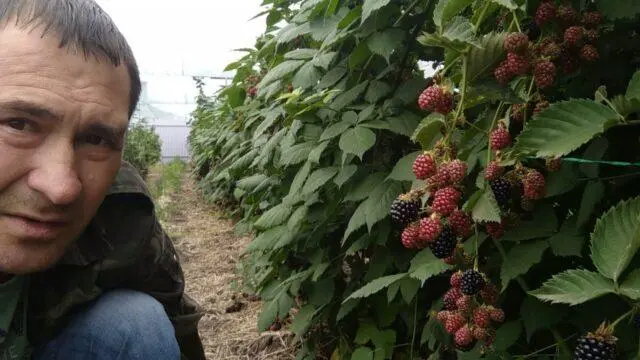
Variety Chachanska Bestrna was originally created as an “industrial”
External description of the blackberry variety Chachanska Bestrna
The hybrid forms powerful bushes with shoots growing up to 3-3,5 m. There are no thorns on them, the internodes are short. At the base, the shoots branch intensively. Berries are formed along their entire length. The leaves are large, the surface of the plates is strongly corrugated. On the petioles there are single, not too hard “thorns”.
During budding, Chachanska Bestrna blackberry is very decorative. Her flowers are large, “lush”, pale pink in tone, with a slight aroma.
The berries are large, one-dimensional. On average, they weigh 9-10 g, but there are also more “massive” specimens of 14-15 g each. The shape is correct, oval-conical. The skin is thin, blue-black, with a glossy sheen. From the stalk in the stage of full maturation, the blackberry is easily separated.
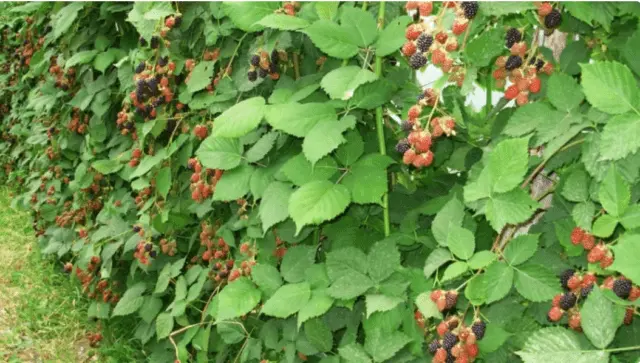
The absence of thorns greatly facilitates the care and harvesting of Chachanska Bestrna blackberries.
Ripe berries of the hybrid spread a rich, very pleasant “blackberry” aroma. Their taste is balanced – sweet, with a light, refreshing sourness.
Blackberries are suitable both for fresh consumption and for any home-made preparations (jams, marmalades, compotes). The filling for baking is also very tasty. Once cooked, the berries, if processed shortly after picking, retain their pulp texture and benefits to a large extent.
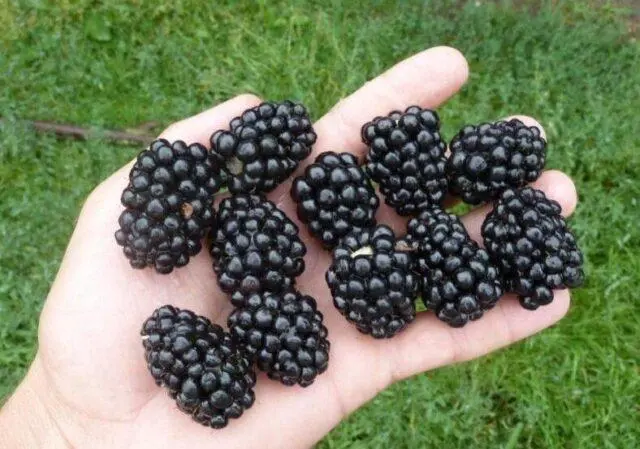
Each blackberry Chachanska Bestrna consists of 85-90 small, tightly “linked” drupes
Characteristics of the blackberry Chachanska Bestrna
When choosing a blackberry variety, it is important to pay attention not only to the taste and appearance of the bush. Other parameters are taken into account that determine the possibility of its cultivation in a given area, and the efforts that will have to be spent on planting care.
Ripening time and yield
Chachanska Bestrna is a mid-season blackberry variety. In central Our Country, the first berries are removed from the bushes in the last days of July or in the first decade of August.
8-10 kg of berries are harvested from the bush. Competent agrotechnics and optimal climatic and weather conditions for the culture make it possible to raise the figures to 12-15 kg. The maximum yields when grown on an industrial scale are about 20 tons per hectare.
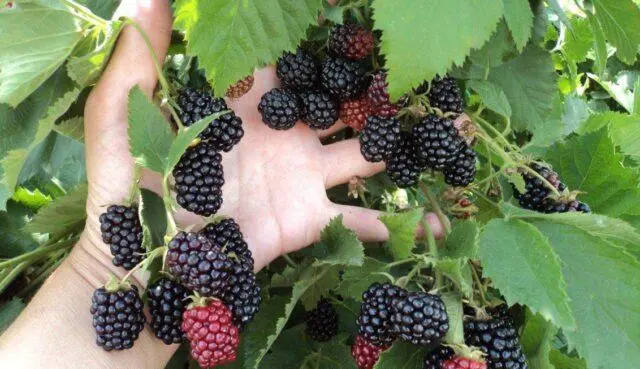
Fruiting is extended, lasts 4-5 weeks, so the color of the berries on the bush varies
Frost resistance
The cold resistance declared by the breeder is about -25 ° С. The experience of gardeners testifies to more modest indicators – up to -20 ° С. Therefore, it is possible to neglect the shelter of a hybrid for the winter only in warm southern regions.
Disease and pest resistance
The overall resistance to pathogens in Chachanska Bestrna blackberry is not bad. Fungal diseases are rare for her. In pests, this is also not the most favorite variety. But the hybrid does not have a “genetically built-in” immunity against diseases and insects, therefore, preventive treatments with fungicides and insecticides are mandatory for it.
Pros and cons of the variety
The popularity of Chachanska Bestrna blackberry among amateur gardeners and professional farmers is due to its significant advantages over other varieties and hybrids:
- suitability for cultivation on an industrial scale and for personal consumption;
- relative unpretentiousness, concerning both the landing site and agricultural technology;
- shade tolerance;
- stable high yield;
- very good immunity;
- the ability to tolerate heat and drought with minimal damage to the volume and quality of the crop;
- lack of thorns on the shoots;
- dessert taste, large size, general presentability of berries;
- versatility of the purpose of blackberries.
Blackberries Chachanska Bestrna also have quite significant disadvantages:
- achievement of maximum yields and a radical improvement in the taste of berries only for 3-4 seasons after planting seedlings;
- very low keeping quality and transportability of blackberries;
- frost resistance insufficient for many regions.
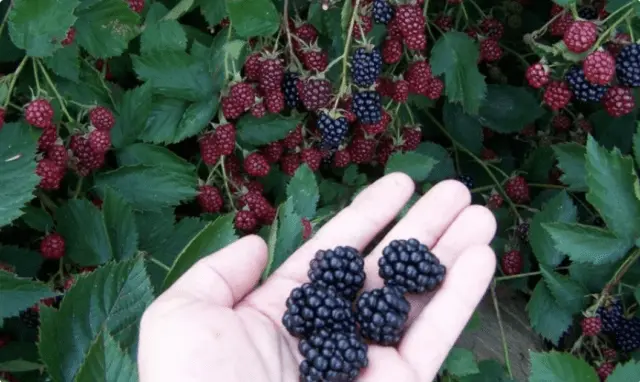
Presentation is one of the undoubted advantages of blackberries Chachanska Bestrna
There is no consensus regarding extended fruiting. Some gardeners consider this feature of Chachanska Bestrna blackberries to be a virtue, allowing them to eat fresh berries longer and process the crop gradually. Others note that due to the possible early onset of cold weather, there is always a risk that some part of the crop will not have time to ripen.
Rules for planting blackberries Chachanska Bestrna
A suitable site for planting Čačanska Bestrna blackberries should meet the following criteria:
- Good illumination.
- The presence at some distance of a “barrier” to protect against the cold wind.
- A flat area or a place closer to the top of a gently sloping hill.
- Nutritious, but relatively light soil, providing normal air exchange and not allowing water to stagnate at the roots. The acid-base balance of the soil is neutral.
- Groundwater, occurring at least 1-1,5 m from the soil surface.
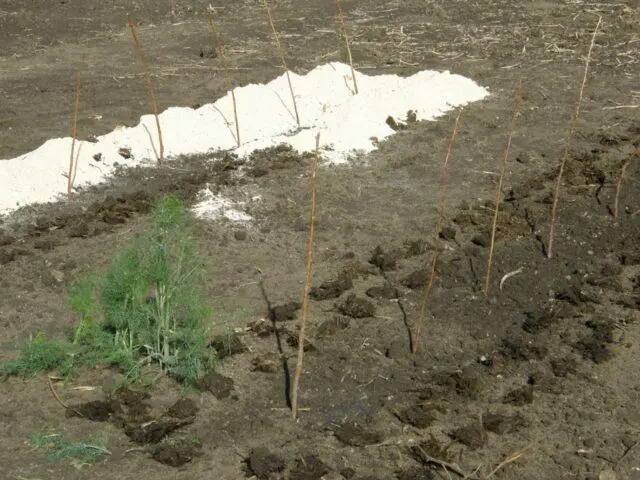
With a lack of light, the Chachanska Bestrna blackberry will not die, but the volume and quality of the crop will invariably deteriorate.
You can plant Chachanska Bestrna blackberries both in spring and autumn, focusing on the characteristics of the local climate. The second option is practiced mainly by gardeners in the south of Our Country. In the spring, you need to wait until the substrate at a depth of 40-45 cm warms up to at least 6-8 ° C, in the fall, at least a month should remain until the first frost.
Planting pits are prepared about two weeks before the landing of Chachanska Bestrna blackberries. If it is planned for the spring, you need to dig them out in the fall. Humus and the necessary fertilizers are applied immediately, mixed with the most fertile soil (top sod) and poured back into the pit.
It is necessary to immediately provide a place for the trellis. The shoots of the blackberry Chachanska Bestrna are quite powerful, but not upright. The height of the trellis is about 2,5 m, it consists of several vertical supports with rows of wire stretched horizontally between them. The distance between the posts is 2-2,5 m, the wire is pulled every 60-80 cm.
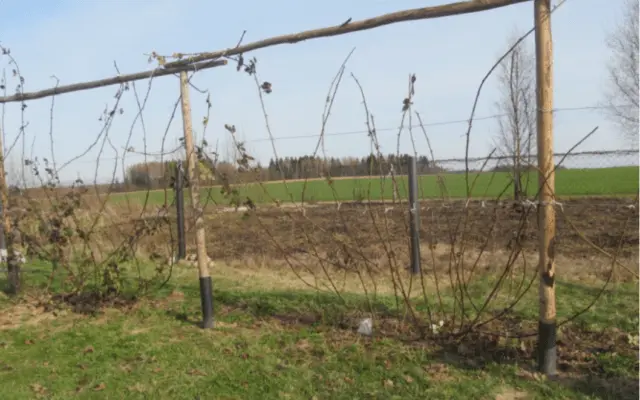
Proper placement on a support provides the bushes with high-quality ventilation and lighting.
Before and after planting, the soil should be watered abundantly. In the process, the roots should not be bent up, the root neck should not be buried in the ground. It is left raised above the soil level by 4-5 cm.
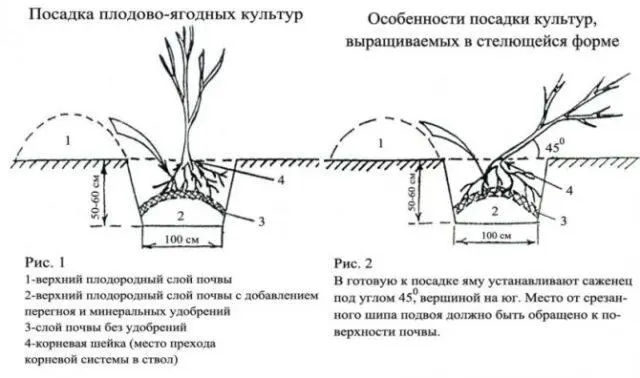
Directly planting blackberries Chachanska Bestrna is no different from a similar procedure for other berry bushes
Blackberry Care Chachanska Bestrna
Care for the Chachanska Bestrna hybrid requires the same care as most varieties of thornless blackberries:
- Watering. The culture is moisture-loving, but does not tolerate stagnant water at the roots. Therefore, there is no clear schedule, it all depends on the frequency and intensity of precipitation. On average, it is enough to water the plants every 4-5 days, spending 20-25 liters per bush. In the heat, the intervals are reduced to 2-3 days.
- Top dressing. In the spring, to maintain the fertility of the soil, humus is distributed annually or every 2-3 seasons around the trunk circle. Approximately in mid-April, Chachanska Bestrna blackberries are watered with a solution of any mineral nitrogen fertilizer. Further, it is recommended to use purchased complex products specifically for blackberries or for fruit bushes. Plants are fed during flowering and twice more, with an interval of 15-20 days.
- Pruning. Blackberry Chachanska Bestrna requires both sanitary and formative pruning. The first is carried out twice a year, at the beginning and at the end of the growing season, getting rid of broken, frozen, most poorly located branches affected by diseases and pests. When forming bushes, they take into account that Chachanska Bestrna blackberry bears fruit exclusively on two-year-old shoots, therefore, after harvesting, they are cut off completely. Excessive thickening should not be allowed, leaving 6-8 of the most powerful and developed shoots coming from the roots on the bush.
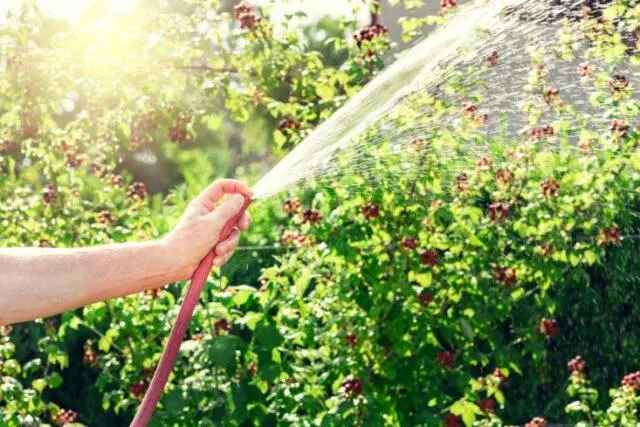
It is especially important to regularly moisten the soil for blackberries during flowering and the formation of fruit ovaries.
How to prepare for winter
Around the middle of autumn, the shoots are removed from the support and gently tilted, if possible laying on the ground. If there is a real risk of breaking the branches, bend down as low as possible.
The trunk circle with a diameter of 40-50 cm is mulched with peat or humus (layer 5-7 cm thick). At the roots, it is also poured into a “mound” 15-20 cm high. The stems lying on the ground are covered with fallen leaves, spruce branches, straw and covered with 2-3 layers of covering material or burlap, securely fixing the entire structure. It is most convenient to pull the protection on low arcs.
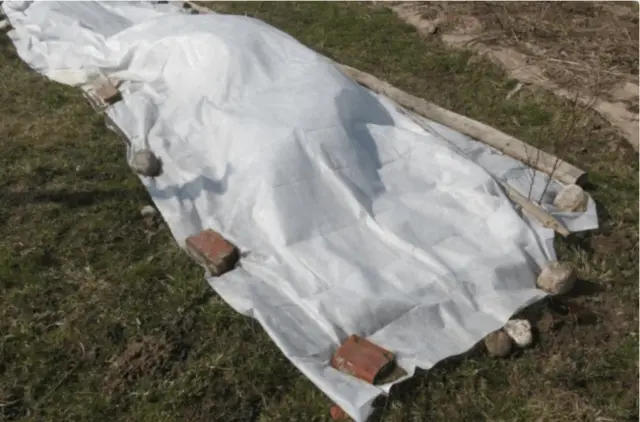
Do not cover Chachanska Bestrna blackberries with plastic wrap
How it breeds
Blackberry Chachanska Bestrna is a hybrid. Therefore, in order to guarantee the preservation of varietal characteristics, it is propagated exclusively by vegetative methods. It is not particularly prone to the formation of root shoots, so gardeners use layering or cuttings.
Rooting of cuttings is possible only if the Chachanska Bestrna blackberry shoot can be bent to the ground. It is placed in a shallow groove, having previously slightly cut the bark from below, fixed in this position, covered with humus. If a new bush is formed at this place, in the fall or next spring it is separated from the “mother” plant and transferred to a permanent place.
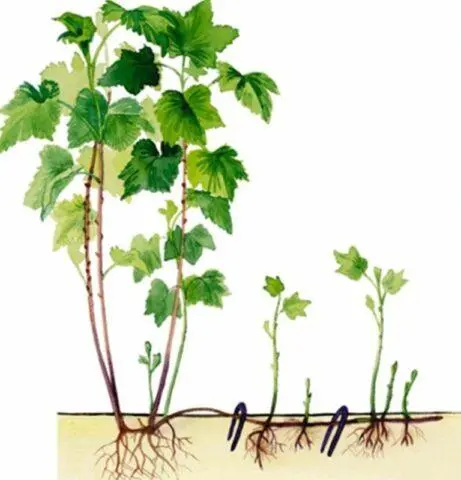
During the summer, the place of the alleged formation of a new bush is watered abundantly.
Blackberry cuttings Chachanska Bestrna – tops of shoots 12-15 cm long. For root formation, they are treated with a biostimulant. Cuttings are planted in containers with any moisture-intensive substrate one at a time, providing them with “greenhouse” conditions. Instances that have formed roots are transplanted into open ground next spring. Chachanska Bestrna blackberry cuttings are harvested in early summer.
Conclusion
Blackberry Chachanska Bestrna is a variety suitable for cultivation both on an industrial scale and in personal household plots. It cannot be called absolutely problem-free and completely unpretentious, but the choice of a landing site and agricultural technology will not become something too complicated even for inexperienced gardeners. The main “trump cards” of Chachanska Bestrna blackberries are the taste of the berries, the convenience of picking them and high yields.










